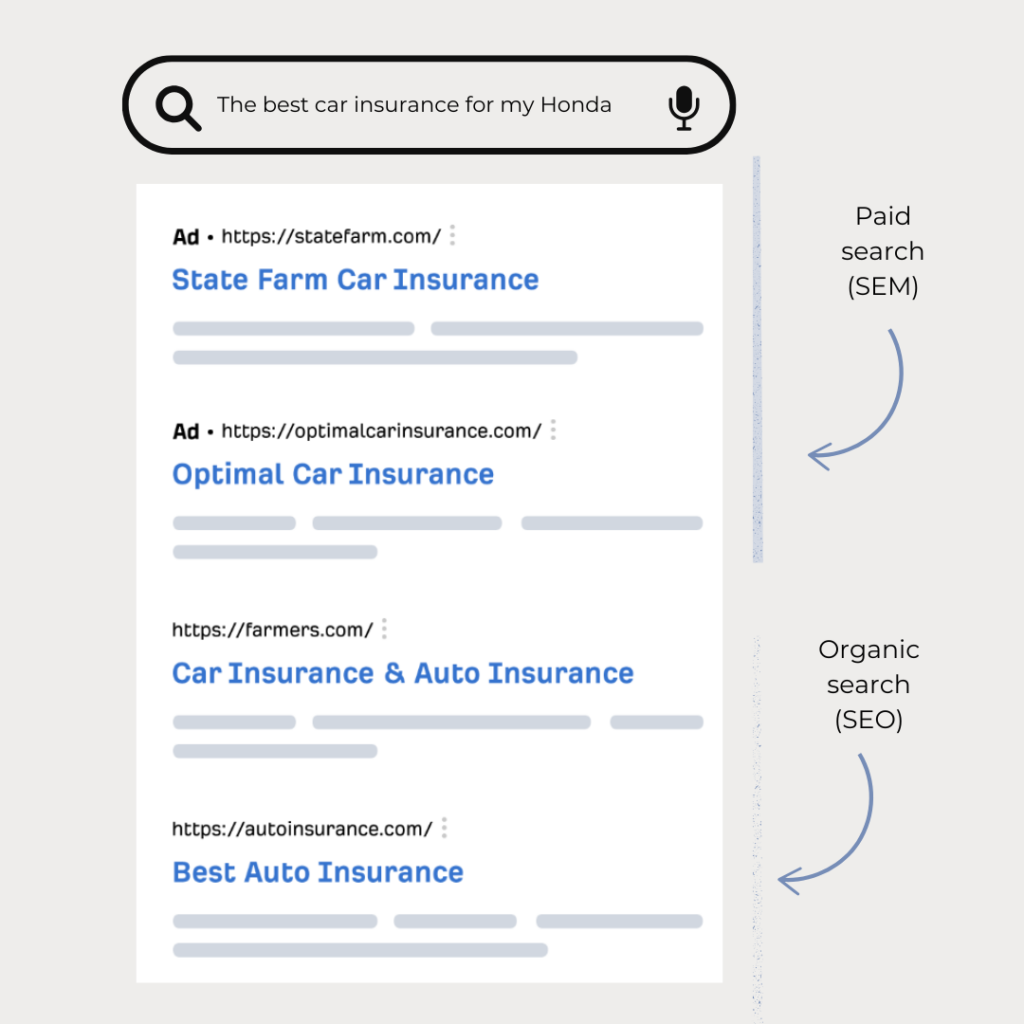In the world of digital marketing, SEO (Search Engine Optimization) and SEM (Search Engine Marketing) are two strategies that often come up in conversation. The key difference between SEO and SEM is that SEO is all about boosting your website’s visibility in organic search results, while SEM covers both organic methods and paid ads to drive traffic.
Defining SEO and SEM
What is SEO?
SEO focuses on improving a website’s organic (non-paid) search rankings. It involves optimizing various elements, such as keywords, on-page and off-page factors, content creation, and technical aspects, to make a website more attractive to search engines like Google. The goal is to rank higher in search results for relevant queries, driving more organic traffic to the site.

Key Features of SEO:
- Keyword research and optimization
- On-page optimization (meta tags, headers, content)
- Off-page optimization (link building, social media engagement)
- Technical SEO (site speed, mobile-friendliness, indexing)
- Content creation and optimization
What is SEM?
SEM, on the other hand, is a broader approach that encompasses both organic and paid strategies. While it includes SEO, SEM often emphasizes paid advertising methods like PPC (Pay-Per-Click). With SEM, marketers bid on keywords, create targeted ads, and set budgets to display their ads to potential customers searching for related terms.
Key Features of SEM:
- Keyword bidding and targeting
- Ad creation and optimization
- Budget management and bid adjustments
- Audience targeting and segmentation
- Performance tracking and analytics
The Overlap:
Despite their differences, SEO and SEM share some common goals and strategies. Both aim to build online visibility, reach target audiences, and increase website traffic. Keywords play a critical role in both SEO and SEM, as they help guide content creation and ad targeting. Additionally, data insights from SEM campaigns can inform SEO strategies and vice versa, providing valuable information about keyword performance and audience behavior.
Key Differences: Organic vs. Paid Efforts
One of the main distinctions between SEO and SEM lies in their approach to results. SEM, particularly PPC advertising, offers quick, immediate results by displaying ads to users searching for relevant terms. SEO, on the other hand, is a long-term strategy that focuses on building organic authority and traffic over time.
Cost is another key difference. SEM involves immediate costs due to ad spend, while SEO is more of an investment in time and effort. Performance measurement also varies between the two, with SEO tracking metrics like organic traffic and rankings, and SEM focusing on click-through rates and cost-per-click.
Which to Choose: SEO, SEM, or Both?
When deciding between SEO and SEM, consider your budget, timeline, and long-term goals. For new or seasonal businesses looking for quick results, SEM might be the better choice. However, for sustainable growth and long-term brand authority, SEO is essential. In many cases, a hybrid approach that combines the strengths of both SEO and SEM can maximize visibility and drive the best results.
Tips for Integrating SEO and SEM
To effectively integrate SEO and SEM, start by developing a unified keyword strategy that leverages shared data. Use SEM as a testing ground for SEO content ideas, keywords, and audience targeting. Ensure that your brand message and tone are consistent across both paid ads and organic search content to create a cohesive experience for users.
Conclusion
SEO and SEM are two powerful digital marketing strategies that can work together to boost your online presence and attract more qualified traffic. By understanding their similarities, differences, and how they complement each other, you can create a tailored approach that aligns with your goals, timeline, and budget. Whether you choose to focus on SEO, SEM, or a combination of both, remember that the key to success lies in continual optimization and adaptation based on data-driven insights.
Ready to take your digital marketing to the next level? Contact us today to learn how we can help you develop a winning SEO and SEM strategy that drives results.

Comments:
share